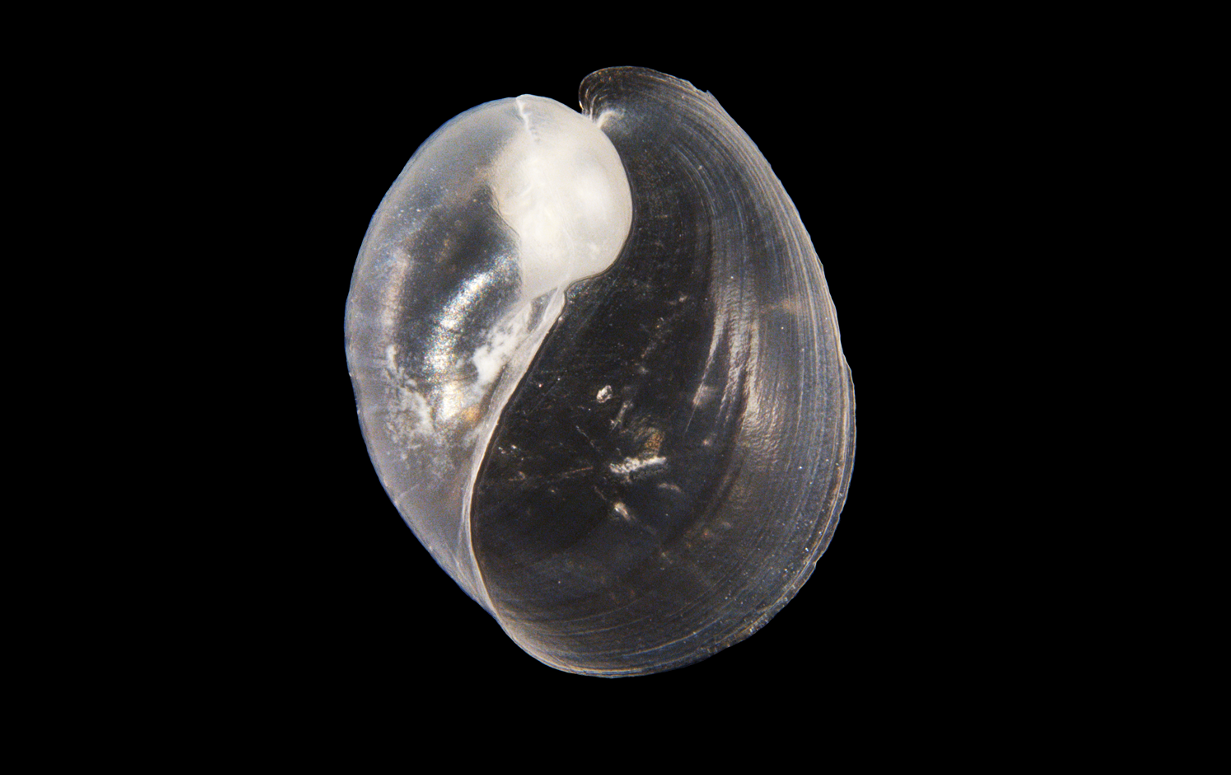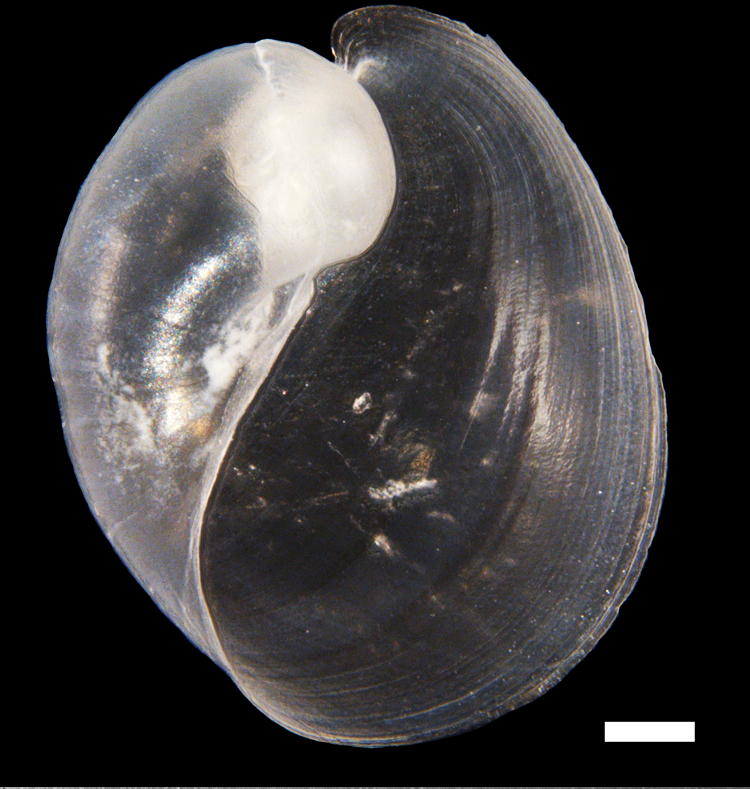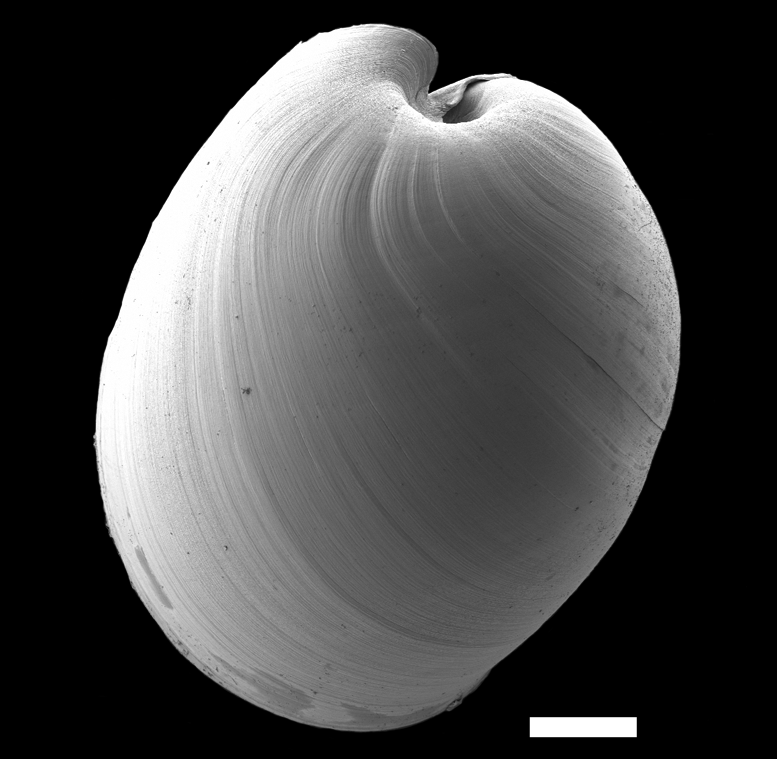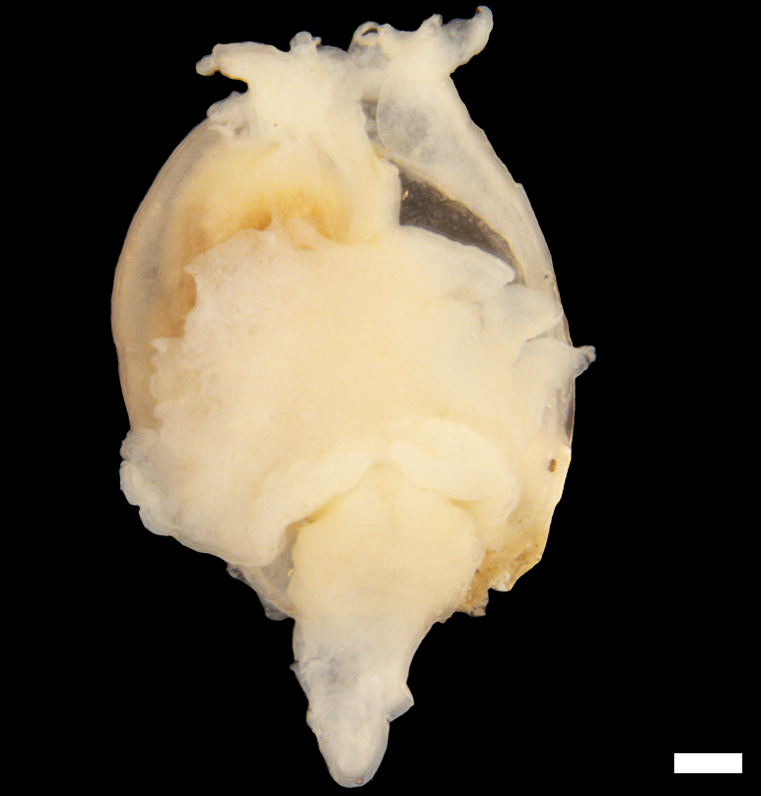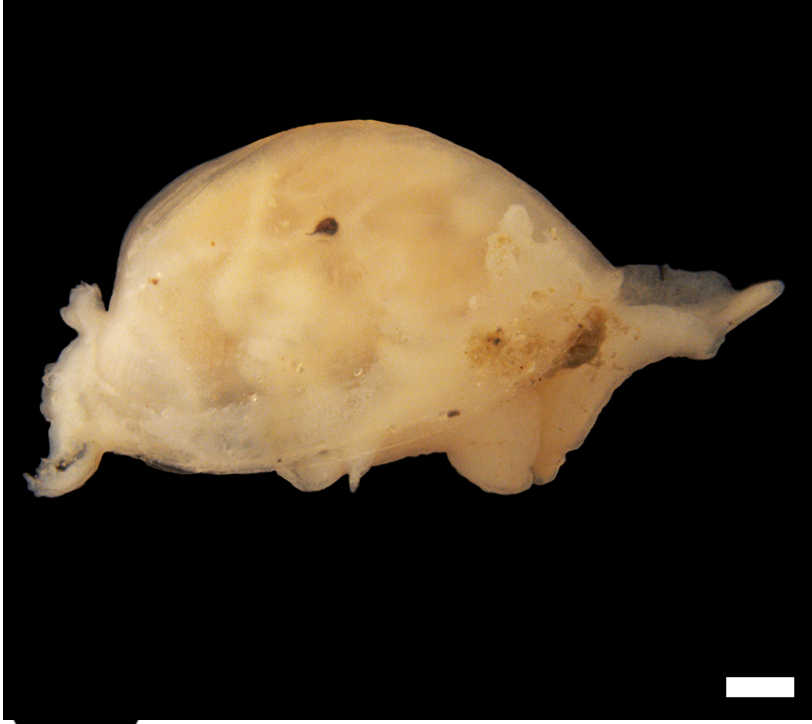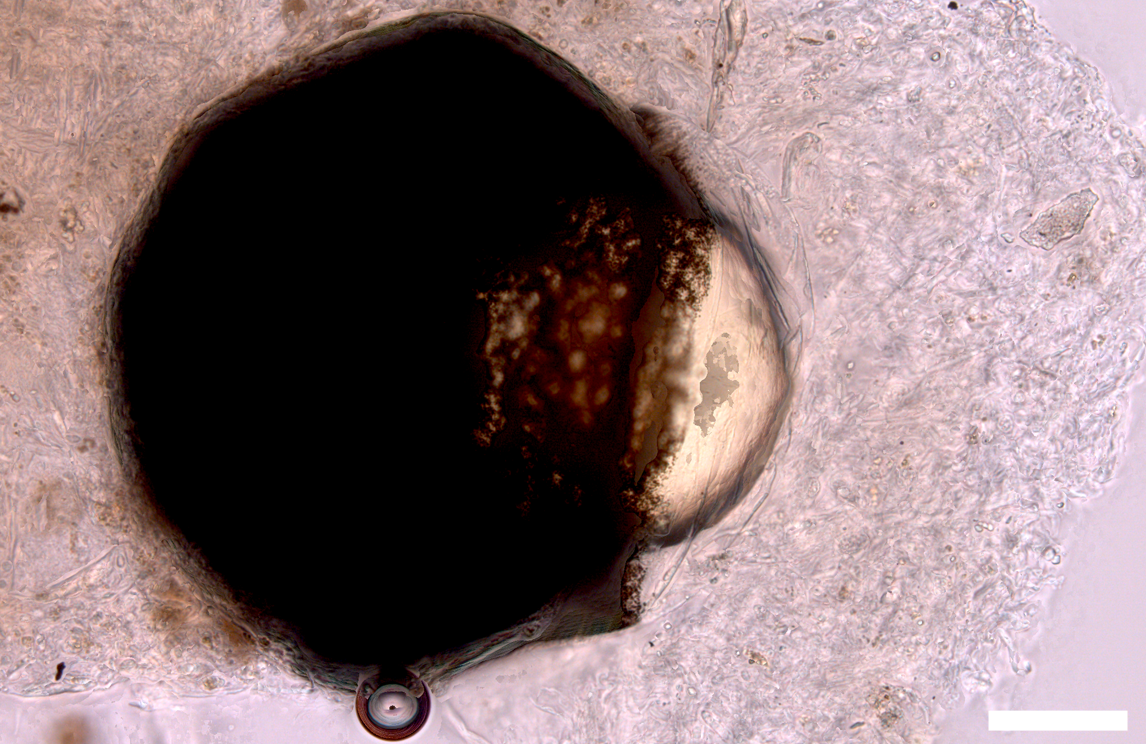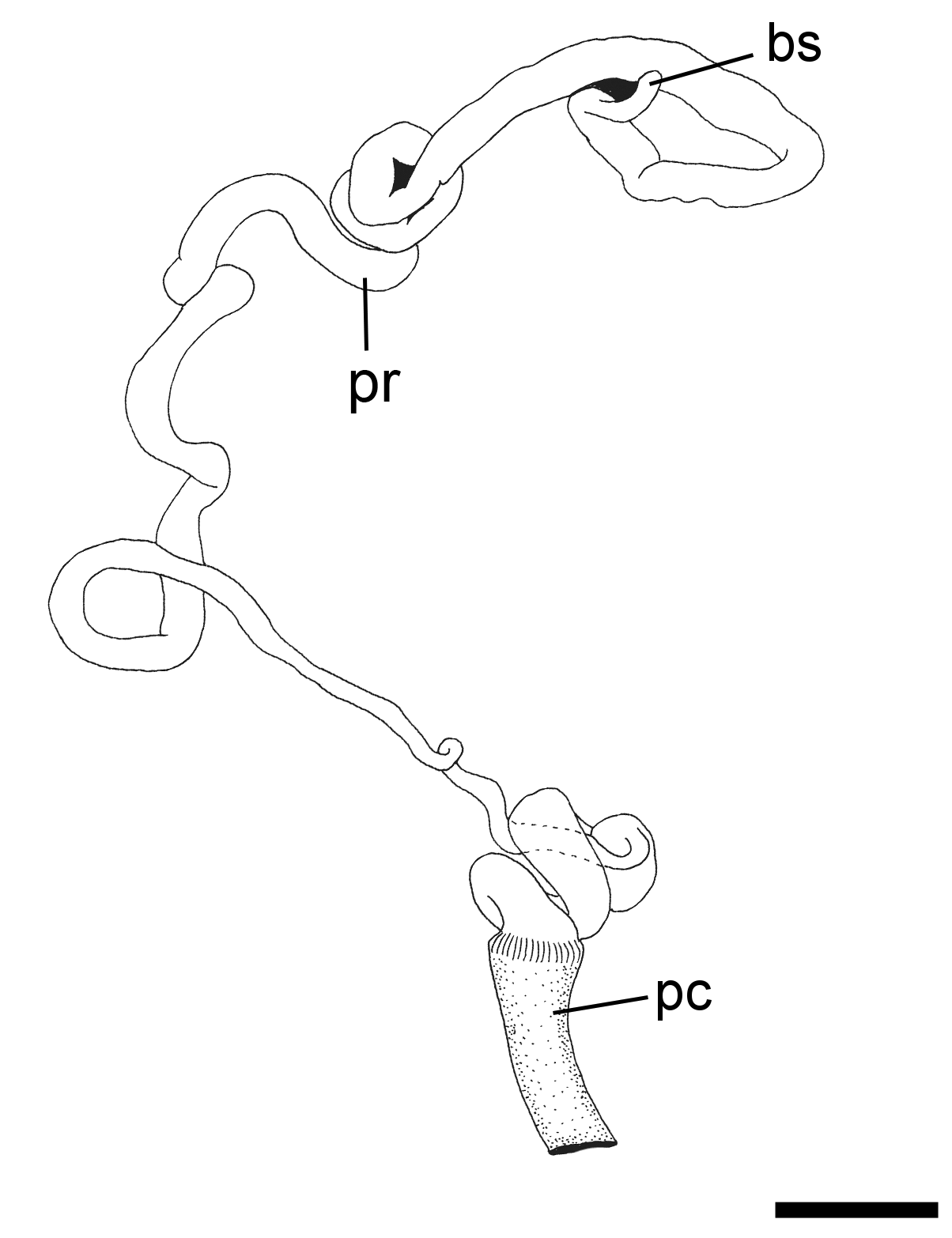Philine grandioculi
Shell description
The thin shell is internal and transparent, with a rounded elongate shape when viewed from above. The opening is wide; the edge is smooth and runs the length of the shell. The top of the shell (apex) is sunken. The shell is umbilicated. The shell surface is smooth. The size of the shell varies between 1.3–3.2 mm.
Animal description
The body is white in colour, and the head shield narrows towards the back and has no middle groove. The tissue covering the shell (mantle) is thin; on the underside we find a noticeable pallial lobe (part of the mantle) that is separate from the foot. This species has large visible eyes.
Anatomy
The radula consists of 14 rows of teeth, with one outer lateral tooth and one inner lateral tooth on each side. The central (rachidian) tooth is absent. The outer lateral teeth are curved with rounded tips and a broad base. The inner lateral teeth are curved with rounded tips and a broad base, the inner edge is coarsely denticulate. The gizzard is rounded and not surrounded by muscle fibers, and does not hold gizzard plates. The male reproductive system consists of a long thin entangled prostate, which narrows towards the tubular penis chamber. On the thicker end of the prostate we find a blind sack.
Ecology
Occurs from 212 to 219 m on sandy-mud bottoms.
Geographical distribution
Only know from Norway where it occurs south-west of Lofoten Islands and west of Sørøya, Finnmark.
References
Ohnheiser LT og Malaquias MAE (2013). Systematic revision of the gastropod family Philinidae (Mollusca: Cephalaspidea) in the northeast Atlantic Ocean with emphasis on the Scandinavian peninsula. Zoological Journal of the Linnean Society 167(2): 273-326. DOI: 10.1111/zoj.12000.
